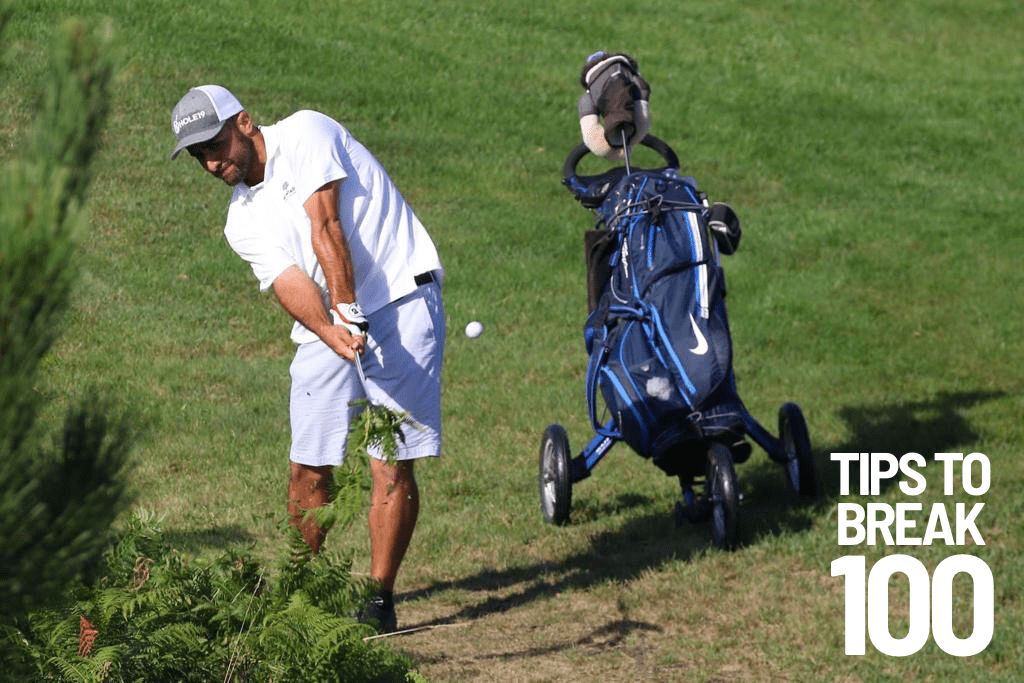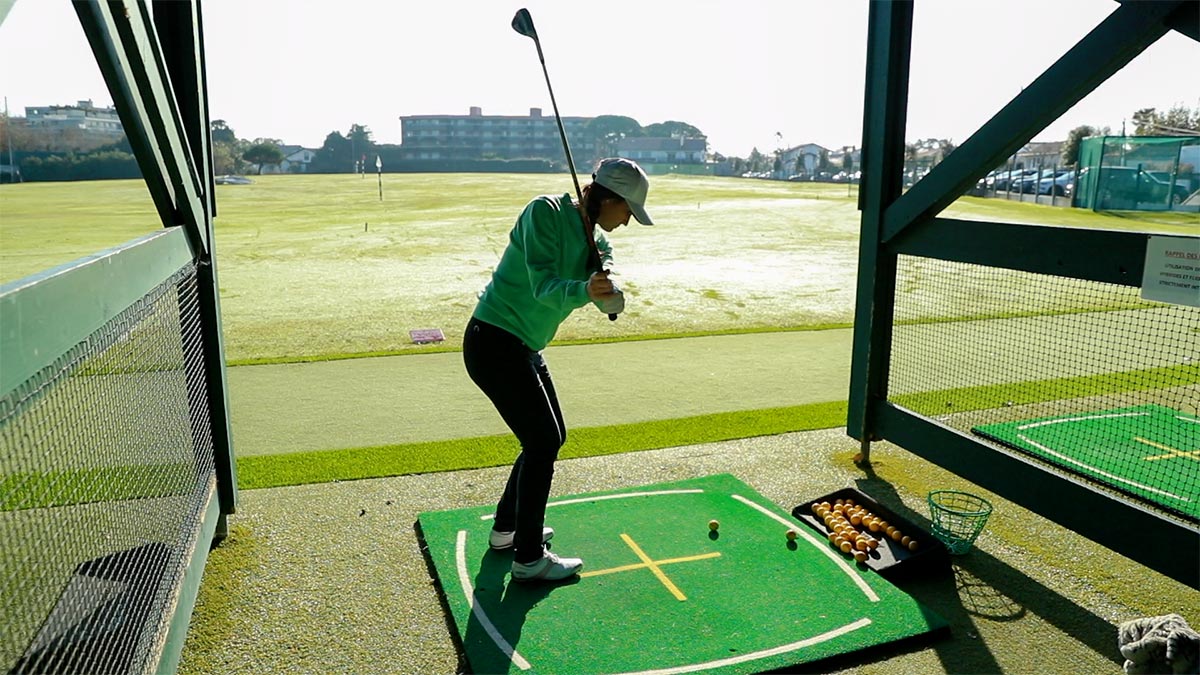
A few tips can help you get the ball farther during your golf swing. One tip is to be as still and steady as possible. Another tip is increasing your distance from the ball. Keeping your body still can help you keep the putter from sliding during the swing. These are just some of the many tips you can use in order to improve your game.
Keep your body still when the putter swings
When you're putting, it's critical to keep your body still while the putter swings. While the putter swing is largely controlled by the arms and shoulders, you must also ensure that your lower body and head remain perfectly still throughout the swing. This allows you focus on your stroke, without having to move.
The key to keeping your body still while the putter swings is to keep your head in line with the ball. This will prevent you swaying from the ball while you are on your backswing or casting when you go downswing. This will help you make more contact.

Sliding during the golf swing
The most common fault in golf swings is sliding. This can lead to poor shots and a loss of power as well as speed. This happens when a golfer shifts their upper bodies in front of the ball. This makes it more difficult to control the clubface's angle and generate rotational force. The amount of sliding in a swing should be maintained consistent.
Sliding is most often caused by lack of hip flexibility. This can be fixed by making sure the hips are at 45 degrees when hitting the ball. This will allow them make good contact when they hit the ball.
During the follow-through, bend your upper body backwards
The backward bending of your upper body during a golf shot is the movement of your shoulders in relation to the ground. This motion can be best visualized by imagining yourself in the finish position of the golf swing. A good player will raise their chest through the follow-through, and keep their shoulders straight away from the target.
To avoid this bending, the golfer should keep both his shoulders and upper body in neutral. The backs of a golfer's shoulders and pelvis are separated by a slight curve in the thoracic spine. However, this posture can be detrimental to the golf swing because it limits the player's shoulder rotation and intervertebral rotation to less than twelve degrees.

Increase the distance between you and your ball
It is important to maintain a good distance between your ball and your body during your golf swing. A golfer who is too close to the ball tends to make impact with their club's heel and this will result in a left-to-right flight of the ball. This condition can also cause arms to get tangled with the body, which can reduce arm extension and compromise balance. Increasing the clearance between you and the ball will give you a more balanced swing and help you hit the ball with more power and distance.
Stand further away from your ball to improve the distance you have between you, the ball and yourself. You will be able to avoid hunching forward to get the ball. This will decrease stress on your lower bodies. The distance between your body, the ball and you will be less likely to block your swing path and cause your ball hook. Additionally, a longer distance between you to the ball and yourself during your golf swing can promote an in-to–out swing plane that will lead to consistent strikes.
FAQ
How is the game of golf scored?
The scorecard is divided into four different categories: Stroke Play, Par 3, Par 4, and Par 5. Each category can also be broken down into strokes. To reach par, a player must play 18 holes (Par 72).
The lowest score wins.
What is the best way to score points as a golfer?
Points are awarded according to how well a competitor performs in a competition. In golf, points can be earned in many different ways. One example is that a player can win a tournament simply by scoring more than anyone else. In another scenario, a player might place second in a tournament. This would allow them to receive half the prize cash that was won by their winner. Points are also awarded for finishing in places 3rd through 10th. These points are also known as "strokes".
There are many unofficial events that give points to the top performers, in addition to official competitions. A player might be eligible for bonus points if they perform well in a specific event.
How often should I go to the golf course?
It depends on how many hours you have. Most people recommend at least two sessions per week.
If you are serious about becoming an expert golfer, you should aim to play four times per week.
What is a Par?
Par is the number required to complete one hole. The total score is calculated by adding up each player's individual score.
In a round, there are 18 holes. Each hole has its own rating. "Par 3" is the highest-rated hole. It is three strokes from the hole. The lowest rated hole is called "par 5''. It is located five strokes from hole.
What should I bring for a golf trip?
You should bring snacks and beverages. Also, remember to pack your favorite tee shirt, sunglasses, gloves, and towels.
Statistics
- Buying a set of Titleist or Taylor-Made irons for nearly $1,000 is simply not necessary and likely a waste of money. (golficity.com)
- They do this by means of assessing and rating courses according to the average good score of a "bogey golfer," a player with a handicap of around 20. (en.wikipedia.org)
- Professional golfers typically make between 60% and 70% of greens in regulation. (en.wikipedia.org)
- In the United States, women made up 25 percent of golfers in 2021, which was up from 19 percent in 2011, and junior female golfers account for 35 percent or 1.1 million golfers.[50] (en.wikipedia.org)
External Links
How To
How to improve your putting game
Golf has existed for many centuries. It was invented in ancient Egypt. It has spread across Europe, Asia, America, and then to America. Golf is a sport that requires strength, agility, flexibility and coordination.
For you to be a good player, you need to have mental preparedness and physical fitness. You should also learn how to swing properly and hit the ball with accuracy. This will enable you to have a good sense for timing and balance when hitting the ball.
There are many ways to improve your putting skills. You can improve your putting game by practicing regularly, especially before you play in a tournament. Another method is to use a training device called the "putter trainer." This will help you improve your posture and your muscles can bend down or straighten again. This improves your vision and muscle control.
Grip pressure is another factor that can affect your ability to putt. Your hands will become tired if your grip pressure is too high. If you release the handle too much, you could lose your power. You should adjust the pressure of your grip depending on the type shot. For example: If you're near the hole, you need to apply more force, while you can use less force if your are farther away.
It is important to keep your wrists straight. This will allow you more freedom in your arms, shoulders and wrists during strokes. Your wrist action should feel fluid and smooth. To improve your putting technique, you can watch videos online or read books about the subject. Also, you can ask some experienced players for tips.